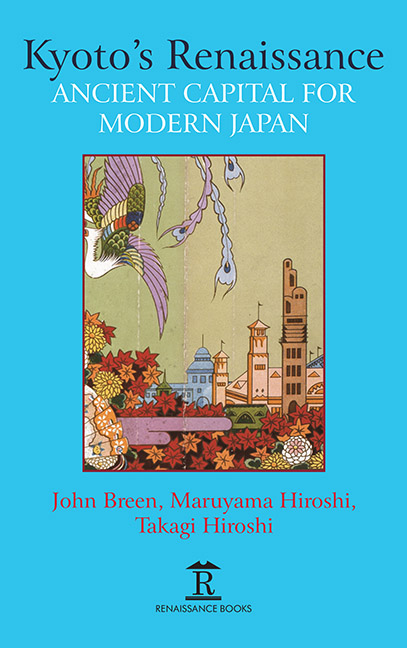Chapter 3 - Buddhism and Society in Modern Kyoto
Published online by Cambridge University Press: 30 April 2022
Summary
INTRODUCTION
KYOTO IS OFTEN referred to as the “city of temples.” This appellation is more aptly applied to Kyoto than to any other city in the Japanese archipelago. As of March 2019, the number of Buddhist temples in the city (i.e., those recognized as official legal religious entities) numbered some 1,662. In a statistical sense, this number may not seem overwhelming when we consider that there are over 76,000 such sites across Japan. However, Kyoto is home to many temples that have played a vital and colorful role in Japanese history; and many Buddhist denominations, Shingon, Rinzai, Jōdo, Jōdo Shin sects have their head temples in Kyoto. Moreover, there are in Kyoto multiple Buddhist universities, with a vital connection to the education of Buddhist clerics, whose histories stretch back for several centuries years or even a millennium. In this regard, the relationship between Kyoto and Buddhism is indeed unique. To this day, Kyoto temples maintain a prominent role as tourist sites. The figures in Table 1 show the premium tourist sites, and it is clear that such temples as Kiyomizudera, Kinkakuji and Ginkakuji still play a vital role in the formation and development of the contemporary image of Kyoto.
The narrative that Japanese Buddhism fell into disarray during the Tokugawa period and then largely disappeared in modern times is now considered nothing more than antiquated popular opinion. Many Kyoto temples saw their vast compounds, land holdings, and assets diminished through government policy in the early years of the Meiji period, it is true, but many of these same sites gradually reconstituted themselves so that by the late 19th century, if not before, they came to be justifiably recognized for their value as treasure troves of important cultural property.
Yamaori Tetsuo, renowned scholar of Japanese religion, has offered some insightful observations concerning Kyoto and religious sites. He proposes we hold the Kyoto Imperial Garden or gyoen to constitute the northern pole of the central rakuchū district of Kyoto. We then see that what occupies the southern pole are the West and East Honganji Temples. Yamaori argues that modern Kyoto is an elliptical sphere formed by these two poles. Modern shrine Shinto was classified by the Meiji government as “non-religious”; it was constructed politically as a belief system common to all subjects, ruling supreme over all religions.
- Type
- Chapter
- Information
- Kyoto's RenaissanceAncient Capital for Modern Japan, pp. 65 - 92Publisher: Amsterdam University PressPrint publication year: 2020



